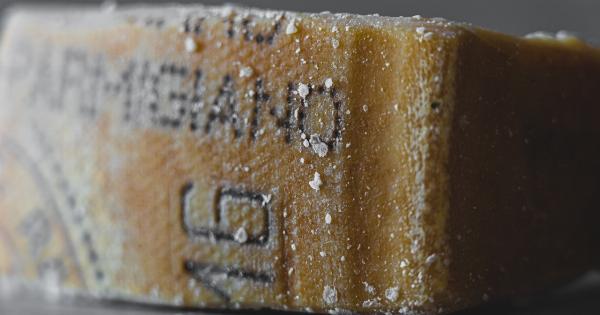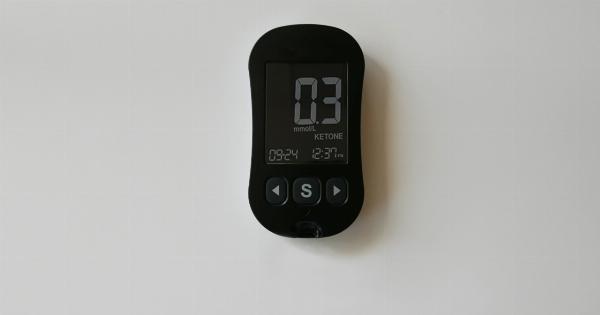Headaches can be debilitating, impacting our ability to concentrate, work, and enjoy everyday activities.
While headaches can have various causes, recent research suggests that reducing sodium intake could be an effective way to alleviate headaches for many individuals. This article explores the connection between sodium and headaches and provides practical tips for reducing sodium intake to potentially improve headache symptoms.
Sodium and Headaches: Understanding the Association
Sodium is an essential mineral that plays a crucial role in maintaining fluid balance in our bodies. However, consuming too much sodium can lead to numerous health issues, including high blood pressure, heart disease, and stroke.
Some studies have also found a link between excessive sodium intake and headaches.
Research suggests that excessive sodium intake can increase blood pressure, triggering migraines or tension headaches in susceptible individuals. Sodium can cause blood vessels to constrict, leading to reduced blood flow and oxygen supply to the brain.
This constriction can contribute to the development of headaches or intensify existing ones.
The Impact of Sodium on Migraines
Migraines, a type of headache characterized by severe pain, are often linked to dietary triggers. For some individuals, high sodium consumption can act as a triggering factor.
While the exact mechanisms underlying this association are not yet fully understood, reducing sodium intake has been shown to help mitigate the frequency and severity of migraines in some individuals.
In addition to sodium’s effects on blood pressure and blood vessel constriction, excessive sodium intake can also lead to dehydration.
Dehydration is a common trigger for migraines, and sodium plays a role in maintaining proper hydration levels within the body. By reducing sodium intake, individuals may be able to prevent or lessen the intensity of migraines linked to dehydration.
Reducing Sodium Intake: Practical Tips
Reducing sodium intake can be challenging, considering the prevalence of processed and packaged foods in the modern diet.
However, with a few simple adjustments, individuals can significantly reduce their sodium intake and potentially alleviate headaches.
1. Cook Meals from Scratch: By preparing meals at home using fresh ingredients, individuals can have better control over the amount of sodium in their food.
Home-cooked meals allow for the use of natural seasonings and spices to enhance flavor, reducing the need for excessive sodium.
2. Read Labels: When purchasing packaged foods, reading nutrition labels is crucial. Pay close attention to the sodium content per serving and opt for products with lower sodium levels.
It’s important to note that some foods may appear healthy but can be surprisingly high in sodium, so it’s essential to scrutinize the labels.
3. Choose Fresh Foods: Fresh fruits, vegetables, and lean proteins are naturally low in sodium. Incorporating these into meals can help decrease overall sodium consumption.
Additionally, fresh foods provide essential nutrients and antioxidants that support overall health.
4. Use Alternatives to Salt: Experiment with alternative seasonings such as herbs, spices, citrus juices, and vinegar to add flavor to meals without relying solely on salt.
This not only reduces sodium content but also enhances the taste and variety of dishes.
5. Limit Processed Meats and Cheeses: Processed meats, such as deli meats and sausages, and certain types of cheese are typically high in sodium.
Minimizing their consumption or opting for low-sodium alternatives can help lower overall sodium intake and potentially alleviate headaches.
6. Rinse Canned Foods: Canned foods, including beans and vegetables, often contain excess sodium due to preservation methods. Rinsing canned foods before consumption can help reduce their sodium content significantly.
7. Be Mindful of Condiments and Sauces: Condiments like ketchup, soy sauce, and salad dressings tend to be sodium-rich. Opt for reduced-sodium versions or make homemade alternatives using low-sodium ingredients.
8. Stay Hydrated: Drinking an adequate amount of water throughout the day can help maintain hydration levels and potentially mitigate headaches caused by dehydration. Adequate hydration is crucial for overall health and supports various bodily functions.
9. Keep a Food Diary: Tracking food intake, including sodium consumption, can help identify patterns between sodium intake and headache occurrence. This can aid in adjusting the diet accordingly and reducing exposure to potential triggers.
10. Seek Professional Guidance: If headaches persist or significantly impact daily life, consult a healthcare professional. They can provide personalized advice and determine whether further interventions or treatments are necessary.
Conclusion
Reducing sodium intake appears to be a promising strategy for alleviating headaches, particularly migraines, in many individuals.
By understanding the link between sodium and headaches and implementing practical tips to lower sodium consumption, individuals may experience a reduction in headache frequency and severity. Embracing a balanced and nourishing diet that prioritizes fresh, low-sodium foods can not only benefit overall health but also potentially provide relief from debilitating headaches.































